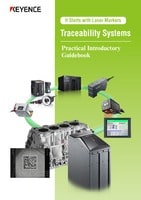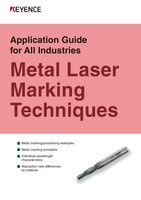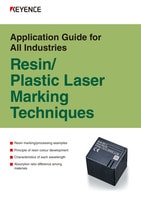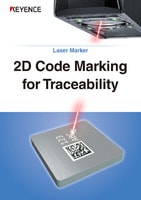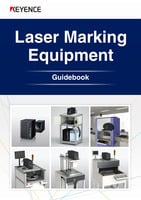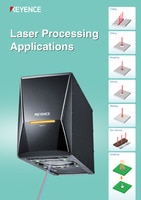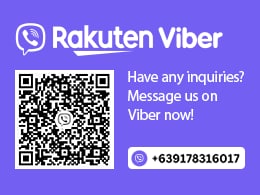Industrial Laser Marking Systems / Laser Markers
Industrial Laser Marking Systems / Laser Markers
Products Lineup
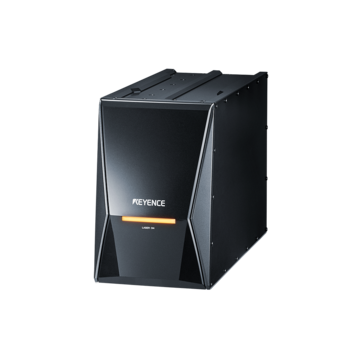
Newly developed hybrid laser
Fast and clear marking on and processing of resins and metals
Features
Full-Field Auto-Focus
Autofocus Anywhere
Mark in-focus on any part, anywhere.
The MD-X laser marker comes standard-equipped with a built-in distance sensor that enables automatic focal corrections. Eliminate manual height adjustments due to part variations in a few simple steps.
- 2x
- 1.75x
- 1.5x
- 1.25x
- 1x, selected
- 0.75x
- 0.5x
- Chapters
- descriptions off, selected
- captions settings, opens captions settings dialog
- captions off, selected
This is a modal window.
Beginning of dialog window. Escape will cancel and close the window.
End of dialog window.
This is a modal window. This modal can be closed by pressing the Escape key or activating the close button.
Built-In Vision
Mark the same location on any part, anywhere.
The MD-X Series contains a camera inside the laser marking head which can automatically identify a target’s shape. The laser marker can then adjust for X, Y and theta offsets to ensure the marking position is always correct.
The marking system is even able to distinguish between parts and mark each part accordingly.
- 2x
- 1.75x
- 1.5x
- 1.25x
- 1x, selected
- 0.75x
- 0.5x
- Chapters
- descriptions off, selected
- captions settings, opens captions settings dialog
- captions off, selected
This is a modal window.
Beginning of dialog window. Escape will cancel and close the window.
End of dialog window.
This is a modal window. This modal can be closed by pressing the Escape key or activating the close button.
Data-Driven Analytics
Automatic fault protection and monitoring from anywhere.
The new MD-X uses predictive maintenance to eliminate problems before they occur. In the unlikely event of a marking defect, the laser marker features a wide range of diagnostic tools to identify the root cause and deploy countermeasures.
- 2x
- 1.75x
- 1.5x
- 1.25x
- 1x, selected
- 0.75x
- 0.5x
- Chapters
- descriptions off, selected
- captions settings, opens captions settings dialog
- captions off, selected
This is a modal window.
Beginning of dialog window. Escape will cancel and close the window.
End of dialog window.
This is a modal window. This modal can be closed by pressing the Escape key or activating the close button.
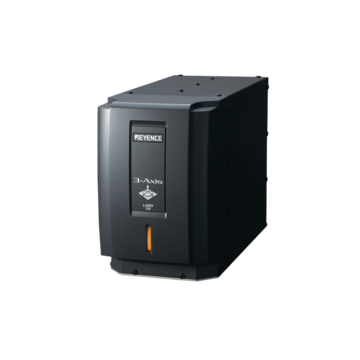
3-Axis control high-power laser
Ultra high-speed marking on and processing of metals
Features
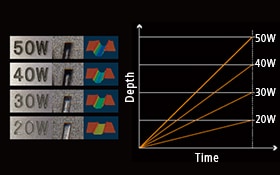
High-Power Fibre Laser Technology
In addition to the 30 W model, a 50 W model with best-in-class output has been added to our lineup. High-power fibre laser technology leads to remarkable improvements in marking time, production efficiency, and quality.
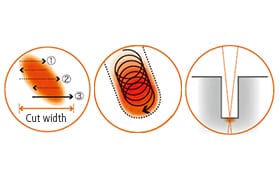
Scanner Controls to Match Your Application
The MD-F Series makes it possible to select the optimum laser scanning control to match the application. The optimum marking parameters can easily be selected for the material and content being marked. This makes it possible to improve marking time and quality in nearly every application.
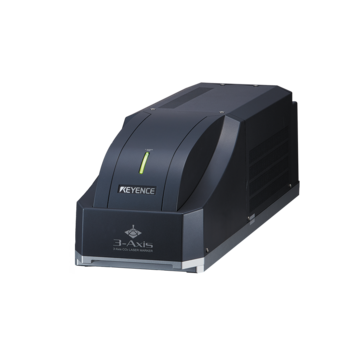
3-Axis control CO2 laser
High-quality marking on and processing of paper, resin, etc.
Features
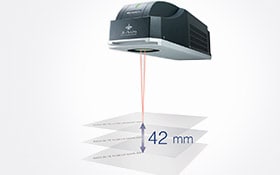
Reduced Setup Costs and Installation
The ML-Z Series locates the focal length at any distance within a 42-mm range. There's no need to design a complex mechanism to adjust the height of the marker during product changeovers.
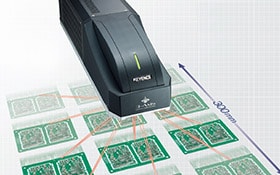
300 x 300 mm Marking Area with Unprecedented Accuracy
Typical wide area marking applications require either a multiple marker installation, or an X/Y stage to index the target. The ML-Z’s 300 mm marking area reduces installation costs by eliminating the need for multiple marking heads and mechanical index devices. The variable focal range and spot size also helps to keep marking precision equal throughout the entire marking field.
Simply put, laser markers use high-energy light to mark the surface of a part. Laser markers vary by the wavelength of light, and different wavelengths are optimised for marking and processing different materials.
The majority of industrial laser markers are YVO4 lasers, fibre lasers, UV lasers, and CO2 lasers.
Laser markers are used to permanently mark text, logos, barcodes, or 2D codes on parts in all industries. Common marking types include oxidising, annealing, engraving, etching, discoloration, and processing.
Benefits of Laser Markers
Inkjet and pad-printing systems leave impermanent marks that can be rubbed off or fade away. Laser marking does not wear off or contaminate the product being marked.
Because laser markers use light to directly mark products, there is no need to purchase consumables, clean print heads, or perform other routine maintenance tasks that are necessary with conventional ink and label marking methods. This also helps reduce associated maintenance costs.
Typical systems can only mark in 2 dimensions (X and Y). KEYENCE laser markers have 3-axis beam control, allowing them to mark across a larger area, compensate for part variation, and correct for mounting restrictions with zero physical equipment adjustments.
For industries that use shot blasting for strengthening parts, laser markers can be a solution for ensuring shot blast-resistant marks. Laser markers use engraving to create 2D codes that do not get fully tarnished with shot blasting.
Laser Marker / Laser Engraver Case Studies
Laser marking in the automotive industry
Learn how laser markers are used with automotive parts. KEYENCE introduces specific laser marking in automotive and other various laser marking with cars.
Laser marking in the electric vehicle industry
Curious how laser markers are used with electric vehicles? KEYENCE introduces specific laser markings for the EV industry and other various laser marking with batteries and ECUs.
Laser marking in the battery industry
Discover laser marker applications in lithium-ion battery manufacturing. Learn about lithium battery production and manufacturing processes.
Laser marking in the electronics and semiconductor industry
Explore electronic marking solutions with KEYENCE. Achieve precise laser marking on semiconductors and electronic components for enhanced production efficiency.
Laser marking in the medical industry
Curious how laser markers are used in the medical industry, especially with medical device laser marking? KEYENCE introduces specific laser markings for the medical industry and other medical instruments.
Laser marking in the aerospace industry
KEYENCE offers cutting-edge laser marking technology, which is used in the aerospace industry to engrave or mark components with great precision.
Laser marking in the food / pharmaceutical industry
Discover the high-resolution, safe, and permanent solution for product laser marking in the food and pharmaceutical industries with KEYENCE's laser marking.
Laser marking in the agriculture and farming industry
Discover KEYENCE's cutting-edge laser engraving and marking systems for the agriculture and farming industry, designed to elevate traceability and efficiency.
Laser marking on metal
Achieve precision and durability with advanced laser engraving & marketing machines for metal. Perfect for efficient, reliable metal marking in various applications.
Laser marking on plastic
Discover plastic laser marking: explore laser etching and engraving. Explore the world of laser marking plastic, including dark and white markings, transparent designs, and so on.
Laser marking on glass
Unlock glass engraving with our laser marking solutions: precision glass marking and etching. Discover our glass engraving machine for exquisite laser glass engraving.
Laser marking on ceramic
Ceramic laser engraving is the process of using a laser marking machine to engrave a ceramic product. Laser machines remove ceramic material through high heat absorption, leaving behind a marked design.
Laser marking on wood
Elevate wood and paper marking with laser precision. Explore laser marking on wood and paper, with our advanced laser wood engraving machine.
Laser marking on rubber
Unlock precision rubber marking with laser technology. Explore laser marking for rubber and silicone rubber, including laser-cutting capabilities.
Laser Marker Applications
Laser marking
Explore the diverse applications of laser marking with KEYENCE. Learn how laser marking technologies transform industries with precision and efficiency.
Laser engraving
Enhance efficiency with industrial laser engraving machines. Explore laser engravers designed for high-speed, precise, and durable marking applications.
Laser etching
Boost your production quality with KEYENCE's laser etching applications & machines. Find cost-effective solutions for detailed engraving and etching across materials.
Laser annealing
Exploring laser annealing: types, uses, and metal applications. Discover the transformative power of this advanced technique across industries.
Laser labelling
Explore the role of laser labelling in decreasing production time and costs while increasing permanency using laser markers. Discover applications of laser labelling.
Laser cleaning
Elevate production quality with laser cleaning technology: remove dust, rust, and imperfections efficiently, reducing costs and improving precision.
Laser rust removal
Efficiently remove rust with KEYENCE's advanced laser rust removal machine. Discover the precision and power of laser technology for effective rust removal.
Laser oxide removal
Check out KEYENCE's advanced laser oxide remover. It's an efficient laser that can even clean aluminium and precise cleaning with other oxide removal.
Laser ablation
Exploring laser ablation: types, uses, and metal applications. Discover the transformative power of this advanced technique across multiple industries.
Laser texturing
Exploring laser texturing: types, uses, and metal applications. Discover the transformative power of this advanced technique across industries.
Laser cutting
Laser cutting is a process that uses laser light to create clean, precise cuts. Learn more about laser cutting systems and their uses in various applications.
Laser paint removal
Explore the efficiency of laser paint removal and the advantages over traditional paint removal methods with KEYENCE's advanced laser technology.
Laser bonding
Learn how laser bonding enables precise and durable bonds in medical, automotive, and electronics industries, ensuring superior product quality and performance.
Laser drilling
Unleash precision with laser drilling for micro holes. Explore laser drilling machines and drill laser technology for efficient and accurate drilling.
White engraving
White engraving is produced by applying a focused beam to the surface of a material to generate enough heat to cause the material to melt. This very quick melting and solidifying of the material causes light to interact with it differently, resulting in a white appearance.
Laser Marking Types
There are five types of laser markers that KEYENCE offers, and each is distinguished by wavelength and marking power. Understanding the identifiers and strengths of each will assist you in choosing the machine for your project.
UV
Discover the power of UV Laser Marking Machines by KEYENCE. Perfect for detailed, damage-free marking and engraving. Find your ideal UV laser marking solutions today.
Fibre
Enhance your engraving, cutting, and marking with KEYENCE's fibre laser technology, offering unparalleled precision and quality.
Hybrid
Hybrid laser markers combine the high quality and depth of focus from a YVO₄ laser with the long service life and high output of fibre lasers. This allows Hybrid lasers to generate more contrast and mark a wider range of materials than Fibre lasers.
CO2
Looking for reliable CO2 laser marking solutions? Explore KEYENCE’s CO2 laser markers designed for reliable, high-quality markings across a wide range of materials.
Green
Green lasers excel at marking at a micron level because of the short wavelength. This is great for micro processing and for microscopic 2D codes, utilised often in the semiconductor industry.
Frequently Asked Questions About Industrial Laser Marking Systems / Laser Markers
Laser markers work by scanning a focused beam of high-energy light across the surface of a part in the desired pattern. Different contrast, depths, and surface finishes can be achieved depending on the laser wavelength and part material.
Laser marking causes discoloration on the surface of a part, whereas laser engraving actually removes material and "digs in" to a part.
Practically speaking: no. Laser etchers interact directly with the surface of a part, so the only real way to remove a laser mark is to remove the material it's on.
With a variety of different models and wavelengths, KEYENCE laser markers can mark a wide range of materials. These include materials such as metal, plastic, glass, ceramic, wood, and rubber. There are even more materials than listed that can be marked but some have been shown to emit harmful gases. In this event, proper guarding and fume extraction should be used to provide a safe operating environment.
When choosing the correct laser marking system for your business many factors should be taken into consideration. Throughout this process, you should evaluate all laser marking models to determine the proper wavelength, wattage, marking field of view, and safety requirements. Below are the main factors:
・Materials – this will narrow down laser marking models by wavelength.
・Time allowed for marking – with marking time you can determine wattage.
・Marking Style/Setup – whether it is a large logo or a matrix of small text this will determine the marking field of view.
・Integration style – safety is always a priority so inline vs offline solutions will change the safety requirements.
With KEYENCE having a large range of wavelength options to choose from, most materials have the ability when properly tested to be marked or etched. Some that do not properly absorb laser light or produce toxic fumes include Delrin, PVC, Glue Backing, and Foam.
In comparison to a conventional IR laser marking system, a UV laser marking system has a much shorter wavelength, typically 355nm, which gives it many advantages when marking specific materials and applications. UV light is the best option for laser marking objects made of heat-sensitive materials, such as plastics or resins. With the lower wavelength, you receive a higher absorption rate allowing for contrast marking on a wider range of materials as well.
When deep engraving with a laser marking system, any depth can be achieved depending on how much time is required to complete the mark. Depending on the material and level of depth laser marking may not be the most efficient solution.
